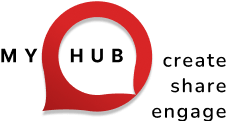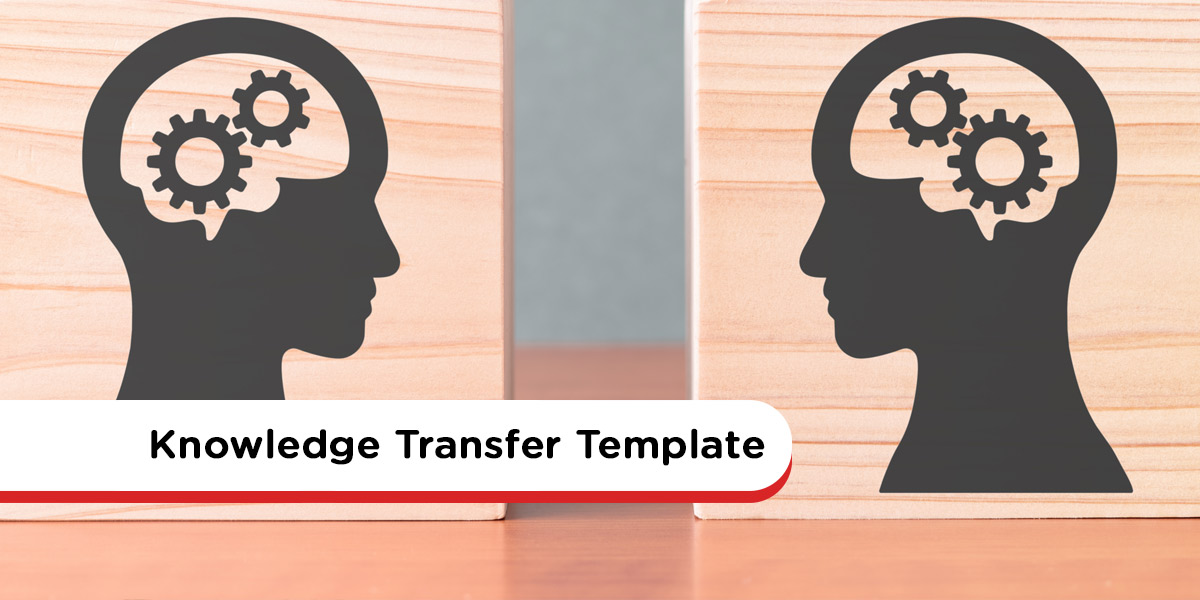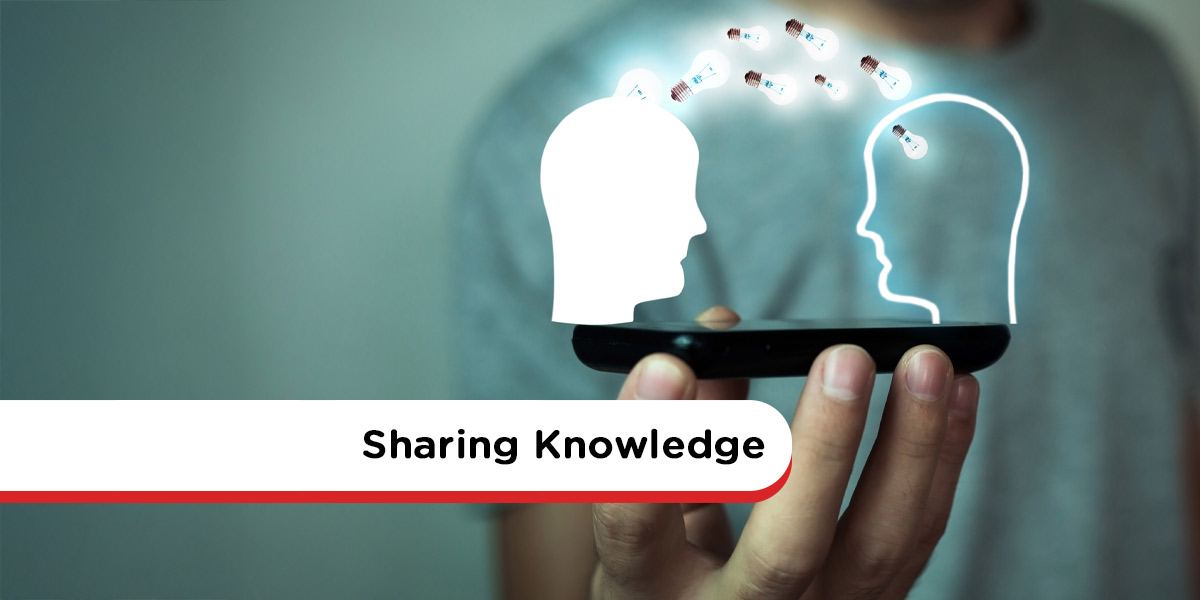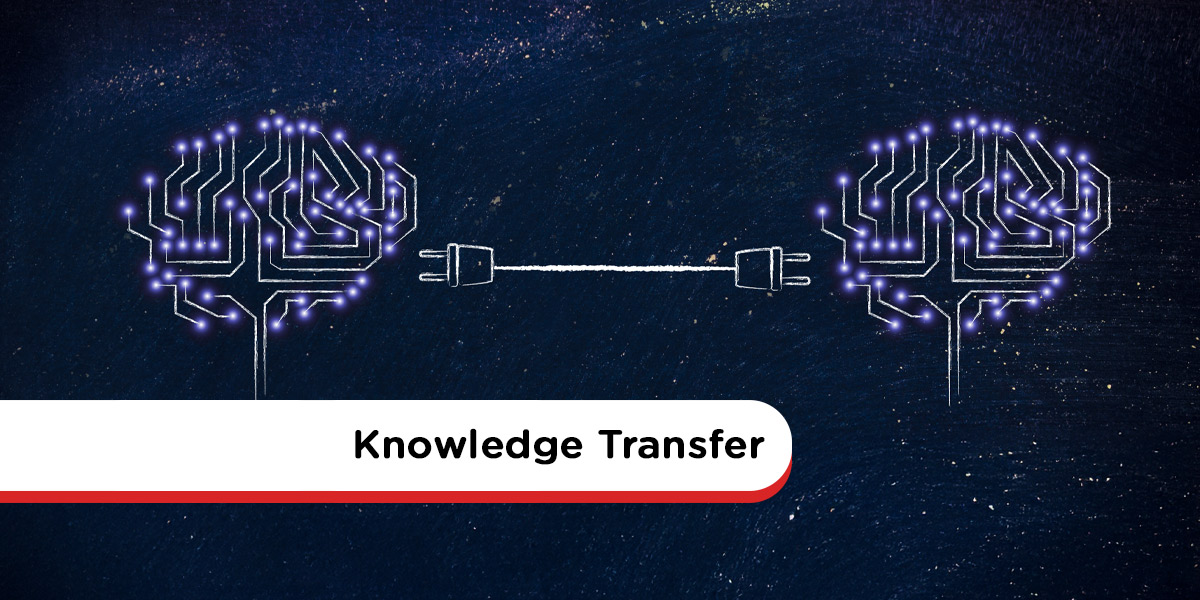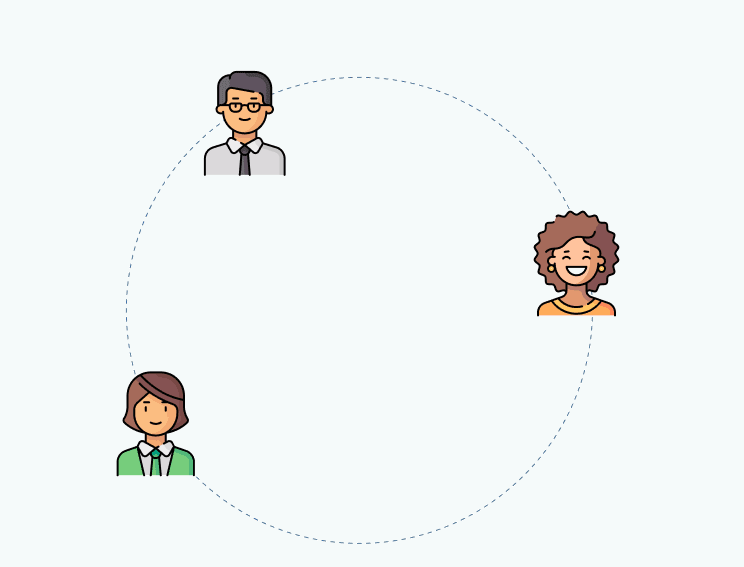
Your New Intranet Starts Here
Streamline communication, boost collaboration, and empower your team with MyHub's intuitive intranet solution.
Book a live demo now and experience the difference.
Take a Quick TourWith the baby boomer generation retiring in record numbers, the spotlight is now firmly on retaining company knowledge. You need a comprehensive knowledge transfer template to safeguard vital know-how.
Finding effective processes for transferring knowledge from baby boomers or other departing employees has become a strategic priority. In today’s digital workplace, a quick handover chat simply won’t cut it. Organizations must develop smarter, more systematic ways to capture and transfer critical knowledge before it disappears.
But with a packed corporate agenda, where do you begin? For many, knowledge management ends up in the too-hard basket. The good news? It doesn’t have to be complicated. Using your existing company intranet, it’s entirely possible to implement an efficient knowledge transfer plan. Effective knowledge management is well within reach.
This post explores how a knowledge transfer template can support your organization. First, let’s define what knowledge transfer is and why it’s essential for long-term success.
What Is Knowledge Transfer?
Knowledge transfer refers to the structured methods used by organizations to share and exchange knowledge among employees. It ensures that institutional knowledge – including job-specific expertise, insights, and occupational wisdom – is retained and reused effectively.
Within every organization, knowledge exists in two key forms:
Explicit Knowledge
Explicit knowledge includes step-by-step instructions, how-to guides, manuals, and databases. This type of knowledge is easy to document and share through formal resources like standard operating procedures (SOPs).
Tacit Knowledge
Tacit knowledge is less tangible – it includes on-the-job experience, judgment, and insights acquired over time. With the rise of remote work, transferring tacit knowledge has become more complex, but even more crucial to maintaining operational excellence.
An effective knowledge transfer plan should address both types of knowledge to avoid knowledge loss and ensure continuity.
Why Knowledge Transfer Is Important
What would happen if a key employee left your company without warning? Could your team carry on seamlessly, or would operations grind to a halt? Many companies find themselves unprepared when unexpected employee turnover occurs.
And it’s not just theoretical. According to Forbes, up to 10,000 baby boomers retire daily in the US – that’s four million annually. These employees often hold decades’ worth of institutional knowledge that’s difficult to replace.
Organizations that fail to implement a knowledge transfer strategy risk losing valuable insight, impacting performance and productivity. Let’s take a closer look at the top benefits of having a plan in place.
- Improves Efficiencies: A structured knowledge transfer template saves time and ensures critical skills and processes are shared clearly and consistently across the organization.
- Reduces Errors And Mistakes: Shared knowledge reduces operational errors and helps employees learn from past mistakes, resulting in fewer incidents and higher overall quality.
- Enhances Compliance: By transferring compliance-related know-how, you minimize the risk of regulatory breaches. Critical guidelines are consistently passed on to the right people.
- Supports Collaboration And Innovation: Knowledge sharing encourages collaboration and nurtures a culture of continuous improvement, making your organization more agile and innovative.
Knowledge Transfer Plan: First Step
With so much know-how to document, the first step can feel overwhelming. Here’s how to get started with a focused approach:
Identify Critical Knowledge And Skills
Begin by assessing your company’s risks. Are key people about to retire or resign? Is a reorganization or merger on the horizon? Identify the subject matter experts whose knowledge is most at risk of being lost.
Prioritize Knowledge
Rank the importance of knowledge by answering:
- What data or expertise is critical to daily operations?
- How many employees currently hold this knowledge?
- How frequently is this knowledge needed?
This prioritization step helps you create a strategic, high-impact knowledge transfer plan.
What Needs To Be Included In A Knowledge Transfer Plan?
Your plan should include these essential components to ensure a smooth transition and long-term value:
- The knowledge to be transferred: Clearly outline the skills, processes, and insights that need to be documented and passed on.
- Transfer method: Select the most effective formats – from job shadowing and mentoring to training guides, how-to videos, and SOPs.
- Knowledge transfer goals: Define what success looks like, whether that’s improved productivity, fewer mistakes, or innovation boosts.
- Roles and responsibilities: Identify the stakeholders – from knowledge holders to mentors, managers, and recipients.
- Transfer plan: Map out the timelines, resources, and activities for executing the knowledge transfer process. A reusable template keeps everyone on track.
- Evaluation metrics: Establish how you’ll measure success – whether that’s fewer safety incidents, faster onboarding, or enhanced team performance.
How To Create A Knowledge Transfer Template
A knowledge transfer template lists questions or areas that must be captured for effective knowledge transfer. It offers a consistent, structured approach to capture internal know-how.
Depending on the role or project, the template can be as detailed or as simple as you like. It could be a straightforward checklist. Or it might have multiple layers of detail.
You can quickly and easily create a knowledge transfer template using the intranet’s drag-and-drop forms builder. One of the benefits of using this approach is that all required template fields must be completed before submission. You could also use a simple workflow to manage the review and sign off once the knowledge transfer is completed.
Alternatively, you can use an intranet-embedded Google Workspace or Microsoft 365 app to create a spreadsheet template. The great advantage is that important context can be included alongside the template. It could be completion instructions or links to documents and files relating to the knowledge transfer effort. You can also include links to how-to videos and podcasts to support the transfer.
A lot depends on the role or specific knowledge that is being transferred. However, there will likely be a broad range of standard information. Therefore, it’s possible to create a standardized template that can be tweaked to reflect specific functions or roles.
Check out our sample template. Use it as a starting point to think about the kind of knowledge you need to capture and exchange in your business.
| Name | Name of skill, task or knowledge area. |
| Basic Information | Basic information on who is completing the knowledge transfer and any special transition or handover arrangements. |
| Objectives & Responsibilities | The objectives of the role and key responsibilities, including any direct reports. |
| Deliverables | Information on deliverables such as a full list of work in progress and a project or task status report for all deliverables including those that have not yet been started. |
| Meetings | A schedule of meetings – dates, times and attendees for all regular meetings and an intranet link to the database of minutes and agendas. |
| Contacts | A full list of key relationships and contacts both internal and external. |
| Compliance & Reporting | Information on any internal or external compliance and reporting requirements. |
| Information | Details on where key information is stored and how it can be accessed. Usually, this will be elsewhere on the intranet and so there needs to be a link to the relevant intranet page where all the essential reference material, standard operating procedures, policy documents, manuals and so on are stored. |
| Budgetary & Financial | Budgetary information including personal reporting responsibilities as well as the overall team or project financials. |
| Risks | Risks – details on the management and mitigation of risks that are assigned to the role and the wider team. |
| Lessons Learned | Lessons learned – this reflects the need to transfer tacit wisdom as well as hard facts and figures. It’s an opportunity to pass on the accumulated insights, understanding and expertise that the current job holder possesses. |
Download a Microsoft Word version of the knowledge transfer template here: knowledge transfer template.docx
Knowledge Transfer Templates: When To Complete
Knowledge transfer templates are excellent tools for capturing and passing on valuable organizational knowledge. Most commonly, these templates are completed when an employee retires, transitions within the organization, or leaves altogether. However, implementing a routine where employees complete a knowledge transfer template every 12 months is a proactive approach. This regular update reduces the risk of sudden knowledge loss due to unforeseen staff departures and also nurtures a culture of knowledge sharing and transparency across the organization.
Knowledge Transfer Methods And Learning Styles
Another key component of an effective knowledge transfer strategy is recognizing and addressing the different learning styles in the workplace. Tailoring your approach to these preferences ensures more successful and lasting knowledge retention. Be sure to include multiple formats and delivery methods in your knowledge transfer plan to engage employees across the spectrum of learning preferences.
Visual Learning Style
Visual learners absorb information best through images, diagrams, and visual storytelling. For this group, resources like videos, infographics, screencasts, and webinars are powerful tools for effective knowledge transfer.
Auditory Learners
Auditory learners understand and retain information best through listening. Leverage tools such as podcasts, recorded discussions, and live instructor-led training sessions to make your knowledge transfer initiatives more inclusive and effective for them.
Read And Write Learning Style
Some employees prefer a read-and-write learning style, where they digest and recall information by reading documents and writing notes. Use checklists, quizzes, manuals, wikis, and internal blogs to target this group efficiently.
Kinesthetic Learners
Kinesthetic learners thrive by doing. They gain and retain knowledge through experience and practice. Hands-on techniques like simulations, role-playing, job shadowing, and structured mentorship programs are perfect for this type of learner.
Knowledge Transfer Strategy: Review And Evaluate
Your knowledge transfer process should be treated as a living, evolving strategy–not a one-time task. New technologies, organizational changes, evolving data trends, and business goals will influence how knowledge is captured and transferred. Regularly reviewing and updating your knowledge transfer template ensures that it remains aligned with your company’s current and future needs.
Knowledge Transfer Templates: Timing Of Completion
While knowledge transfer templates are most often used when employees leave or retire, forward-thinking companies are also leveraging them to manage the workflow of teams and projects. These templates offer a unique level of visibility into team dynamics and responsibilities.
In addition to exit transitions, it’s smart to schedule an annual knowledge capture–ideally every 12 months. This ensures that critical information is up to date and helps protect against sudden exits due to illness or other unexpected events. It also encourages a proactive and prepared workforce.
Simple And Effective Knowledge Transfer Process
Even if your company recognizes the importance of preserving institutional knowledge, executing the actual transfer can be daunting. That’s where a structured knowledge transfer plan template becomes invaluable. When implemented via your company intranet, it simplifies the process and ensures nothing gets lost in translation.
A well-designed knowledge transfer template supports smooth succession planning, guarantees operational continuity, and significantly reduces the risk of losing critical talent and expertise. Ready to take action? Book a free demo or start a 14-day free trial to explore how MyHub’s intranet software supports robust knowledge transfer processes.
Even better, the MyHub intranet platform brings together all the tools your business needs–communication, collaboration, document management, and more–under one digital roof to drive efficiency and innovation.
FAQ
What is a knowledge transfer template?
A consistent form or checklist used to document essential role-specific knowledge—tasks, contacts, processes, systems, and insights—that ensures vital information isn’t lost during transitions.
When should it be used?
It’s ideal during employee offboarding (retirement, role change, resignation), and also beneficial when updated periodically—annually or after key workflow changes—to maintain readiness and continuity.
Why is a standardized template important?
Standardizing the capture process reduces errors, ensures completeness, aids compliance, supports different learning styles, and accelerates transition by making knowledge transfer consistent across roles.
